 We're having schizophrenic weather (again) here in Beantown this late fall/early winter. Monday it was 53 degrees. Today we're capping out at 25, and it was bitterly cold last night. Someone said they heard it was "March weather" because it is all over the map. Whatever. It's Boston. It's always all over the map. But this year I can't complain, since we've had an absolutely ridiculously terrific weather year. Besides, I'm happy shopping at Wilson Farm for all the gourds and root vegetables that are prolific this time of year. Stuffed squash? Check. Pork tenderloin with Port-glazed brussel sprouts? Check. Hearty chicken soup? Check.
In the wine scheme of things accordingly, it's true, I've had a good run in the Languedoc finding wines for "warmer" Fall days and that go easy on the wallet. But with the smell of winter in the air, I'm thinking more and more about Spain. It's a winemaking nation that’s impossible to synopsize because it is a country that has a great history in wine production, but today is one that looks to modern times (and palates) for guidance. As a result, it is arguably the Old World Mecca for innovation.
We're having schizophrenic weather (again) here in Beantown this late fall/early winter. Monday it was 53 degrees. Today we're capping out at 25, and it was bitterly cold last night. Someone said they heard it was "March weather" because it is all over the map. Whatever. It's Boston. It's always all over the map. But this year I can't complain, since we've had an absolutely ridiculously terrific weather year. Besides, I'm happy shopping at Wilson Farm for all the gourds and root vegetables that are prolific this time of year. Stuffed squash? Check. Pork tenderloin with Port-glazed brussel sprouts? Check. Hearty chicken soup? Check.
In the wine scheme of things accordingly, it's true, I've had a good run in the Languedoc finding wines for "warmer" Fall days and that go easy on the wallet. But with the smell of winter in the air, I'm thinking more and more about Spain. It's a winemaking nation that’s impossible to synopsize because it is a country that has a great history in wine production, but today is one that looks to modern times (and palates) for guidance. As a result, it is arguably the Old World Mecca for innovation.
Ever heard of Samso? That’s ok, it’s just an alternate, local name for Carignan, which comprises the full 100% of fermented juice in a wine made by Clos de Noi. These folks are based in Montsant, one of my favorite nooks in Spain (and one I plan to visit next year). Carles Escolarhas is the winemaker behind this floral, intensely concentrated, fruit forward, teeth-sinking red. Ripe blackberry, black raspberry and bramble fruits, are accented with a touch of spice and Montsant’s increasingly sought, slatey minerality. Personally, I love the Clos de Noi all the more for its long, seductive finish.
There are plenty of places in Spain (Rioja, for example) that will warm you up this winter. But if you are a particular fan of big, bold reds with plenty of nuance - or even Priorat, Montsant's better known (pricier) neighbor - than this is an area for you to explore this winter.
What wines are you enjoying as our temps drop and we head into winter?


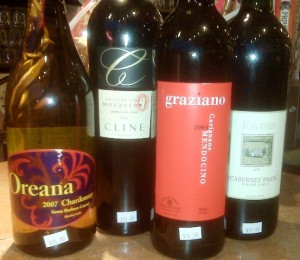
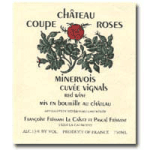 I was channeling Disney and Belle a couple of weeks ago. Today I envision a Greek god named Minervois. Except the name "Minervois", a small sub-region of the Languedoc in France, actually comes from the village of Minerve. Who knew? Because when I re-tasted an old favorite from this area, I wasn't just pleased with the result, it was a near-spiritual experience - for just $13 (retail).
Backing up a touch, Minervois offers the world reasonably priced reds typically comprised of Grenache, Syrah and Mouvedre, perhaps with some Carignan or Cinsault mixed in for good measure. It depends. It's an experimental part of the world down there. Some wines are purely easy quaffing selections. But others are quite memorable. Typically the latter come from low-yield vines (remember, this means concentrated fruit flavors) in the rocky hills above the plateau.
I was channeling Disney and Belle a couple of weeks ago. Today I envision a Greek god named Minervois. Except the name "Minervois", a small sub-region of the Languedoc in France, actually comes from the village of Minerve. Who knew? Because when I re-tasted an old favorite from this area, I wasn't just pleased with the result, it was a near-spiritual experience - for just $13 (retail).
Backing up a touch, Minervois offers the world reasonably priced reds typically comprised of Grenache, Syrah and Mouvedre, perhaps with some Carignan or Cinsault mixed in for good measure. It depends. It's an experimental part of the world down there. Some wines are purely easy quaffing selections. But others are quite memorable. Typically the latter come from low-yield vines (remember, this means concentrated fruit flavors) in the rocky hills above the plateau.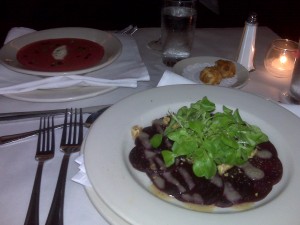 Imagine my delight when I popped over to
Imagine my delight when I popped over to 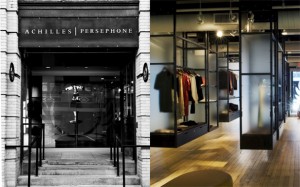
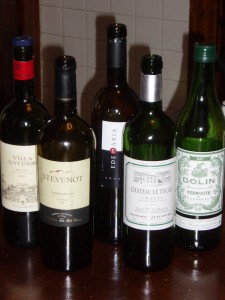 I hope you and yours had a wonderful time popping a cork or two last Saturday night for
I hope you and yours had a wonderful time popping a cork or two last Saturday night for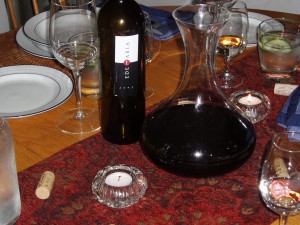 %) and Cabernet Sauvignon (25%). My inspiration for the paprika braised chicken was distinct from the wine I knew I would have on offer, so decanting was a priority to soften any rough edges and remove the sediment the wine was likely to throw. Since I know my friend prefers fruit-forward wines to uber-dry ones, I hoped this wine would deliver a nice silky mouthfeel, with both red and black fruits apparent. Finally, given the region's proximity to the Priorat, I hoped it would have a gentle herbaceousness and a touch of earthy leather. I was pleased to discover it delivered on all of the above!
%) and Cabernet Sauvignon (25%). My inspiration for the paprika braised chicken was distinct from the wine I knew I would have on offer, so decanting was a priority to soften any rough edges and remove the sediment the wine was likely to throw. Since I know my friend prefers fruit-forward wines to uber-dry ones, I hoped this wine would deliver a nice silky mouthfeel, with both red and black fruits apparent. Finally, given the region's proximity to the Priorat, I hoped it would have a gentle herbaceousness and a touch of earthy leather. I was pleased to discover it delivered on all of the above! California wines were largely where my wine journeys started. But living on the east coast, and in New England more specifically, the influence of Old World cultures means there is also a large supply of Old World wines. California became less and less a part of my at-home wine drinking as my tastes took me in different directions and the rich history of winemaking abroad sucked me in. But that doesn't mean California doesn't have quite a bit to offer. It's not exactly a small state and it certainly has myriad climates, micro-climates, soil types, winemaking styles/influences and even its own unique history. So today my quest for winter warmer wines takes me - er, us - west!
One winery that continues to impress me is
California wines were largely where my wine journeys started. But living on the east coast, and in New England more specifically, the influence of Old World cultures means there is also a large supply of Old World wines. California became less and less a part of my at-home wine drinking as my tastes took me in different directions and the rich history of winemaking abroad sucked me in. But that doesn't mean California doesn't have quite a bit to offer. It's not exactly a small state and it certainly has myriad climates, micro-climates, soil types, winemaking styles/influences and even its own unique history. So today my quest for winter warmer wines takes me - er, us - west!
One winery that continues to impress me is  While I may talk a lot about my love of rustic, French wines, Spain is also near and dear to my heart. In particular, I frolic in the
While I may talk a lot about my love of rustic, French wines, Spain is also near and dear to my heart. In particular, I frolic in the